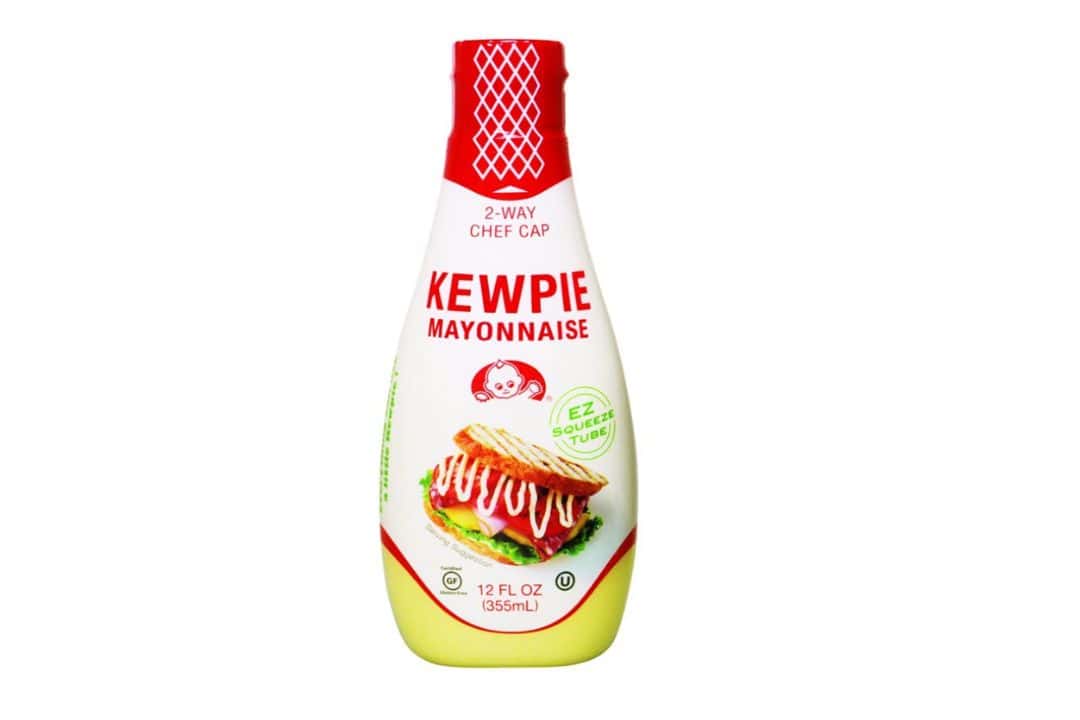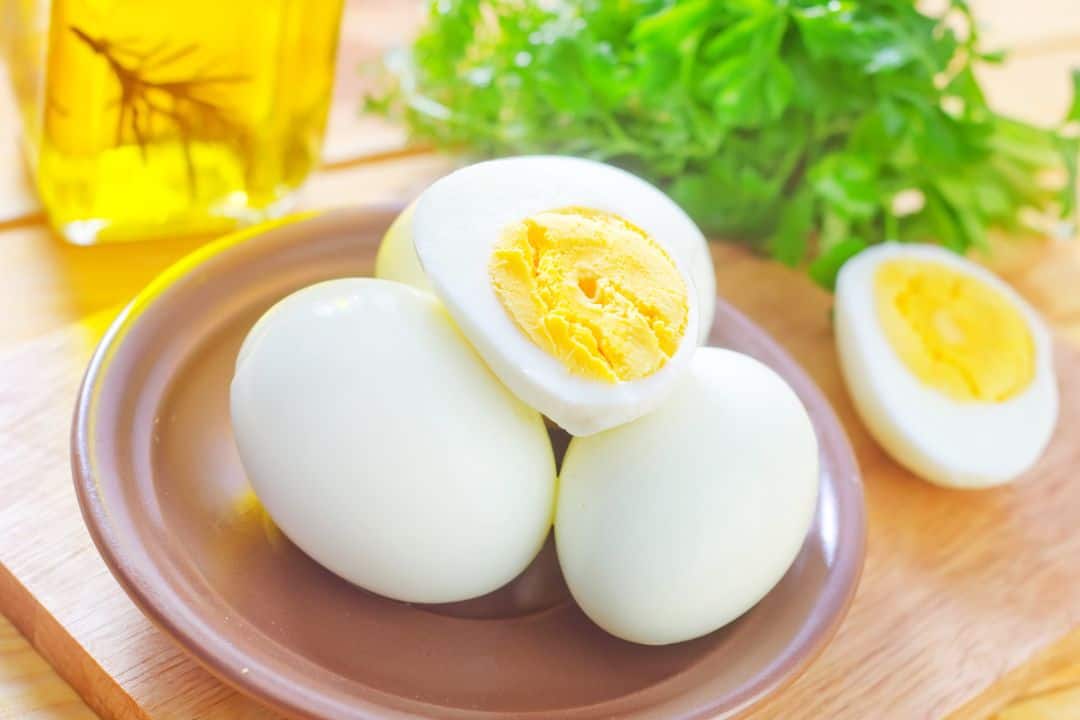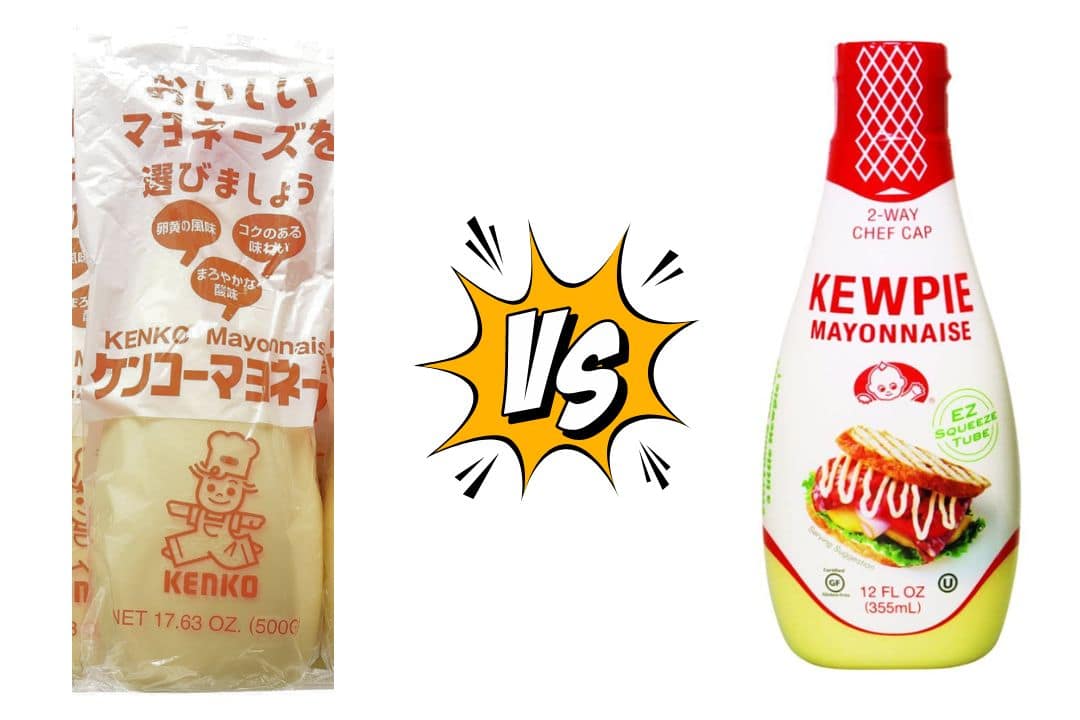Japanese Kenko Mayonnaise vs Kewpie: Best of (2023)
Japanese mayonnaise, especially the renowned Kewpie brand, has seen a surge in popularity in recent years, especially outside of Japan. Several notable differences exist when contrasting Japanese Kewpie mayo with its American counterparts.

Origins and Branding
Kewpie mayo was introduced by the Japanese company founded by Toichiro Nakashima. It took inspiration from American brands but aimed to create a unique flavor profile that catered to the tastes of Japanese people. In contrast, American mayonnaise has been a staple in the United States for years, predominantly used in salad dressings and as a creamy sandwich condiment.

Main Ingredients and Flavor

One of the most significant differences between Japanese Kewpie mayo and American mayonnaise is the main ingredients used. While American mayonnaise typically uses whole eggs, Japanese Kewpie mayo primarily uses only egg yolks.
This results in a creamier texture and a richer, velvety taste. Additionally, while American mayo often uses soybean or canola oil, Kewpie mayo relies on a blend of high-quality vegetable oils.
The choice of acid also differentiates the two. American brands might use white vinegar or lemon juice, which gives the mayo a slightly acidic flavor. In contrast, Kewpie mayo combines apple vinegar and sometimes a hint of MSG to achieve its different flavor – a combination that some describe as savory, umami-packed, and slightly sweet.
Texture and Packaging
The creamier texture of Kewpie mayo is not only due to the egg yolks but also the absence of artificial preservatives. This texture has made it a cult favorite, especially for dishes like potato salad, poke bowls, and even mayo ramen, which David Chang popularized.

With their straightforward squeeze bottle design, the iconic Kewpie bottles make it easy to drizzle this velvety mayo on anything from savory pancakes to french fries.
Substitutes and Homemade Versions
While Kewpie mayo has become more accessible in grocery stores across the globe, some might still struggle to find it in local stores. There are several potential substitutes for Kewpie mayo. Some suggest a homemade version using olive oil or canola oil mixed with miso paste to mimic the savory flavor.
Others recommend adding soy sauce or “wafu mayonnaise spicy” to store-bought mayonnaise as a good substitute. David Chang’s special sauce for his “Puroraw Miso Boom” even includes a homemade Kewpie mayo recipe with miso paste to get that unique flavor.
Health Aspects
For those seeking a healthier alternative, it’s worth noting that while Kewpie mayo boasts a unique flavor and creamier texture, it does contain MSG, which some might be sensitive to. However, the lack of artificial preservatives is a plus.
Some enthusiasts even suggest that a homemade version, incorporating olive oil and excluding additives, might be a healthier choice.
The Health Benefits of Kenko Mayo vs. Kewpie Mayo
Kenko Mayo and Kewpie Mayo are popular Japanese mayonnaise brands known for their unique flavors and textures. One key difference between these two condiments is that Kenko Mayo is vegan, making it an excellent substitute for those who follow a plant-based diet.
Kenko Mayo contains less fat compared to Kewpie Mayo:
Kenko Mayo, made with a lower fat content, is a suitable substitute for those watching their calorie intake. It is an excellent alternative to traditional kewpie mayonnaise and other mayonnaise products.
On the other hand, Kewpie Mayonnaise is a popular substitute for traditional mayo. It has a slightly higher fat content due to its traditional recipe.
Kewpie Mayo, a famous mayonnaise brand, is made with egg yolks, which substitute essential nutrients.
Egg yolks used in Kewpie Mayo, a popular mayonnaise substitute, offer essential nutrients like vitamins A, D, E, and cholesterol.
These nutrients, including vegan mayo, avocado mayo, and spicy mayo, contribute to overall health but should be consumed in moderation as part of a balanced diet. Remember to substitute these options as needed.
Both mayonnaises are a healthier choice as they are free from trans fats, making them a great substitute.
Trans fats, found in traditional mayonnaise, are known for their negative impact on heart health. However, healthier alternatives, such as vegan mayo, avocado mayo, spicy mayo, and kewpie mayonnaise, are available.
Kenko Mayo and Kewpie Mayo are great substitutes for mayonnaise lovers, as they do not contain trans fats, ensuring a healthier option.
Comparison: Kewpie Mayo vs. Kenko Mayo vs. Ajinomoto Mayo

Ajinomoto mayonnaise, a unique substitute, offers a distinct umami flavor compared to the other two brands. It adds a savory taste that differentiates it from Kewpie and Kenko mayonnaise. Replacements may be used.
Kenko mayonnaise substitutes Kewpie mayo, offering a lighter taste than the original’s creaminess. It provides a subtle tanginess that appeals to those who prefer a milder flavor, whether using vegan mayo, avocado mayo, or another mayonnaise substitute.
Each brand of mayonnaise, including avocado and vegan mayo, has its loyal fan base due to its distinct characteristics. People choose Kewpie mayonnaise for its rich and creamy texture, while others opt for Kenko’s lighter and refreshing profile with vegan mayo. Ajinomoto attracts those seeking a bold umami twist in their mayonnaise.
Comparing popular brands like Kewpie and Ajinomoto with vegan mayo reveals exciting differences in mayonnaise. Ajinomoto mayo stands out with its unique umami flavor, adding a delightful savory note that distinguishes it from the other two brands.
Adding mayonnaise enhances the taste and brings out the distinct umami flavor. On the other hand, Kenko mayonnaise offers a lighter bite, providing a refreshing tanginess that contrasts with the creaminess of Kewpie mayonnaise.
Their ability to cater to different preferences sets these three mayonnaise brands apart, earning them loyal fan bases across Japan and beyond. Kewpie mayonnaise boasts its rich and indulgent texture, making it an ideal choice for those seeking velvety smoothness in their sandwiches or salads.
Meanwhile, Kenko mayo caters to individuals who appreciate subtlety, offering a light yet satisfying option that complements various dishes. Kenko mayo is a type of mayonnaise that is perfect for those who enjoy a subtle flavor and want to enhance the taste of their meals.
Kenko mayo is a type of mayonnaise that is perfect for those who enjoy a subtle flavor and want to improve the taste of their meals.
Ajinomoto Mayoe takes pride in delivering an exceptional umami experience with their delicious mayonnaise. Mayonnaise’s distinct flavor profile elevates the taste of any dish it accompanies, making it perfect for those craving an extra burst of savory goodness in their meals.
Exploring the Raw Materials: Egg and Vinegar
Japanese Kenko mayonnaise and Kewpie mayo are made with carefully selected ingredients to create distinct flavors. Let’s look at the raw materials, eggs, vinegar, and mayonnaise, which are crucial in these delectable condiments.
Eggs used in both mayonnaises are sourced from high-quality farms.

Manufacturers prioritize using eggs from reputable farms to ensure the highest quality and freshness. This attention to detail contributes to the rich taste of both Kenko and Kewpie mayonnaise.
Vinegar plays a crucial role in enhancing the tangy flavor of this mayonnaise.

Distilled vinegar is commonly used in Japanese mayo recipes as it provides a sharp acidity that balances well with other ingredients, making the mayonnaise delicious. Rice vinegar, known for its mild and slightly sweet taste, is also utilized in variations of this mayonnaise.
The combination of eggs and vinegar creates the signature taste of Japanese mayonnaise. By blending egg yolks with vinegar, Japanese mayo achieves its unique creaminess and vinegary taste. Mayonnaise is the crucial ingredient that gives Japanese mayo its distinct flavor.
Mayonnaise is the essential ingredient that gives Japanese mayo its characteristic flavor. The balance between these critical components, mayonnaise and dipping sauce, produces a smooth texture that enhances various dishes like salads or sandwiches.
When comparing Japanese Kenko mayonnaise vs. Kewpie mayo based on their raw materials, both brands prioritize using high-quality eggs sourced from reputable farms. They utilize different types of vinegar, including mayonnaise, to achieve their characteristic tangy flavors.
These carefully selected ingredients make each brand’s mayonnaise stand out when used as an ingredient or salad dressing for various rice dishes or vegetable-based recipes.
Unveiling the Secret of the Cap
The iconic red cap on Kewpie mayonnaise bottles ensures freshness and easy dispensing of the mayo. This classic bottle cap design, often associated with mayonnaise, has become synonymous with the brand, offering customers a recognizable and trusted seal.
With a simple twist, you can unlock the creamy goodness of mayonnaise inside.
The Kenko mayonnaise brand offers a unique cap design for easy storage and product usage. Its double cap system provides an added layer of protection, preserving the original texture and flavor of the mayonnaise.
The top cap keeps the mayonnaise securely in place, while the side cap allows for easy squeezing when it’s time to add that perfect finishing touch to your favorite dishes with mayonnaise.
Both brands understand the importance of a reliable bottle cap in maintaining product quality, especially regarding mayonnaise. Whether you prefer Kewpie or Kenko mayonnaise, rest assured that your mayo will stay fresh until its last dollop.
These caps are designed to keep out air and moisture, preventing any potential effects on the taste or consistency of mayonnaise.
So why not give both a try? Experience the convenience of Kewpie’s red cap as it effortlessly tops off your meals with its rich and creamy goodness. Or explore Kenko’s double-cap innovation, ensuring every squeeze delivers a burst of flavor to satisfy your taste buds.
There’s no wrong choice – just two great options waiting for you to discover their unique features and benefits. So grab a bottle with its trusty cap today and elevate your culinary creations with Japanese flair!
Spicy Japanese Style Mayonnaise: Wafu Mayonaizu

Wafu Mayonaizu is a spicy version of Japanese mayo with added seasonings. It adds heat and flavor to various dishes like sushi rolls or tempura. Loved by those who enjoy a tangy twist in their mayo, Wafu Mayonaizu offers a unique taste that elevates the umami flavor of many dishes.
Wafu Mayonaizu is a condiment that combines the creamy goodness of mayonnaise with the boldness of spice.
This mayonnaise style is made with soybean and rapeseed oil and provides a rich flavor that complements traditional and modern Japanese cuisine.
With its spicy kick, Wafu Mayonaizu pairs perfectly with sushi rolls, adding an extra layer of flavor to each bite.
If you’re looking for something beyond traditional mayo, try using Wafu Mayonaizu as a dipping sauce for tempura or drizzle it over grilled meats for an explosion of taste.
For those following specific dietary preferences, vegan versions are available, made without animal products but still delivering the same delicious flavor.
Another variation is avocado mayo, which incorporates creamy avocado into the mix, providing a smooth and indulgent texture to your dishes.
Some other popular variations include miso-flavored mayo or yum-yum sauce, which offer different tastes to explore.
Choosing the Best Japanese Mayo Brand (Kewpie, Kenko, Ajinomoto)
Now that we’ve explored the health benefits of Kenko Mayo vs. Kewpie Mayo, compared different brands, delved into the raw materials used, unveiled the secret of the cap, and even discovered spicy Japanese-style mayo, it’s time to decide. Which brand should you choose?
Well, it ultimately depends on your personal preferences and dietary needs.
Kewpie Mayo is a classic choice if you’re looking for a mayo with a rich umami flavor and creamy texture that pairs perfectly with sushi or sandwiches.
On the other hand, if you prioritize health benefits and prefer a mayo made with organic ingredients like free-range eggs and apple cider vinegar, then Kenko Mayo might be your best bet.
And let’s not forget about Ajinomoto Mayo – it offers its unique twist on Japanese mayo flavors.
Ultimately, the best way to find your favorite Japanese mayo brand is to try them all! Experiment in your kitchen and see which tickles your taste buds. So embark on this delicious journey – discover new flavors and elevate your culinary creations with the perfect Japanese mayo!
FAQs Japanese Kenko Mayonnaise vs Kewpie: Best of (2023)
Is Japanese mayonnaise healthier than regular mayonnaise?
👉 Japanese mayonnaise often contains healthier ingredients such as rice vinegar or apple cider vinegar instead of distilled vinegar in regular mayonnaise. Some brands use free-range eggs or organic ingredients in their recipes.
However, it’s essential to check the labels as not all Japanese mayo brands are created equal regarding healthiness.
Can I use Japanese mayonnaise as a substitute for regular mayonnaise?
👉 Absolutely! In most recipes, you can use Japanese mayonnaise as a substitute for regular mayo. Its unique umami flavor adds depth to salads, sandwiches, sushi, and dips.
Remember that the taste may differ slightly, so it’s always a good idea to do a small taste test before using it in large quantities.
Does Japanese mayo contain MSG?
👉 Some Japanese mayo brands, such as Kewpie Mayo, contain monosodium glutamate (MSG) as one of their ingredients. However, there are also MSG-free options available on the market.
If you’re sensitive to or trying to avoid MSG, read the ingredient list carefully or opt for brands explicitly stating they are MSG-free.
How long does Japanese mayonnaise last?
👉 Due to its pasteurization process, Japanese mayonnaise typically has a longer shelf life than homemade mayo. Unopened bottles can last up to a year when stored in a calm, dark place like your pantry.
Once opened, refrigerate the mayo and consume it within two months for the best quality.
Can I use Japanese mayonnaise in hot dishes?
👉 Yes! Japanese mayonnaise can be used in hot dishes as well. It adds creaminess and tanginess to stir-fries, marinades, gratins, or even as a topping for grilled meats or vegetables. Remember not to overcook it since heat can affect its texture and flavor.
Remember, exploring different brands and flavors is part of the fun of finding your favorite Japanese mayo!

Born and raised in a family of foodies, Georgia’s passion for cuisine was nurtured from a young age as she learned the intricacies of flavor and texture from her grandmother’s kitchen. As an adult, this early fascination blossomed into a full-fledged love affair with the culinary world.







